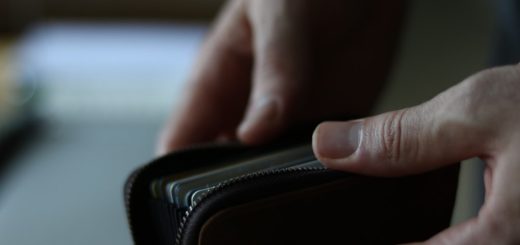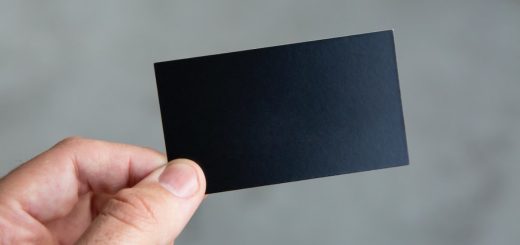Pulling the Trigger
Written by Trent
One of the biggest challenges of saving money for a big goal is when exactly to go forward with that purchase. Three examples:
For almost three years, I saved money for a replacement for my truck. For almost a full year, we shopped for a replacement while continuing to save and, during that year, we passed over several potential replacements before finally settling on a 2004 Honda Pilot. We wound up spending significantly less than we had saved, but we also spent the last several months with the truck in various states of unusability which severely hindered our travel potential.
For about two years, I have saved for a tablet computer of some sort to make note-taking (and sharing and organizing these notes) and mobile web browsing and communication easier – in other words, the bread and butter of my work. I made a feature list defining exactly what I wanted in this device and began saving (using SmartyPig), socking away a few dollars a week. I now have plenty to buy a tablet and there are several tablets on the market that have about 80% of the features I’m looking for at various price points and configurations. Do I pull the trigger on one of these or do I continue to wait for the “perfect” one while making my current research trips and travel more challenging than they could be?
A close friend of mine has plenty of money saved for a laptop. She has a desktop computer at home that’s ailing and she constantly mentions how a laptop would be useful to her. The problem is that she’ll make up her mind to buy one, wait a month or two, and notice a very similar one that costs $50 less and a better one that costs $50 more. So she convinces herself to wait to get the “best” one, but misses out on a lot of time where she could actually be using and enjoying that laptop.
In each case (with somewhat different specifics and resolutions), a purchase was carefully considered, but the challenge of figuring out exactly when to pull the trigger has been the challenge.
If you wait longer, the prices might come down somewhat and you might get more features, but you miss out on the use of the item during the intervening time.
With the Pilot purchase, for example, I was often unable to go to the library to do research I needed to do for my book during my normal working hours because my truck wasn’t working and we hadn’t decided on a replacement for it. This created a cost: I had to wait until Sarah was home with the one functioning vehicle we had and use it to go to the library, missing out on family time (which is my favorite time of the day and the most important time to me) and, more than once, skipping out on fun events. By waiting, we gained a better deal on the car but I lost family time.
With the tablet, I could happily go out right now and buy one that meets almost all of the needs I’ve described for myself – but not all of them. I could continue to wait until the “perfect” tablet comes out (which might happen in six months or might happen in five years), but during that waiting period, my note-taking process and research process remains much slower than it otherwise might be (I’ve used a tablet without owning one and I already know how much of a boost it can be when doing library research or taking notes in a meeting or catching up on reading materials on the road compared to other options). By waiting, I might get the “perfect” tablet, but I lose efficiency and quality of resarch now.
With the laptop, there’s a similar equation at work. She might get more “bang for the buck” by waiting, but she’s missing out on working on her thesis at the park today while watching her kids play.
For me, the balance of factors goes like this.
First, don’t buy such an item if you don’t have the money saved for it. If you can survive without it, even if it’s not convenient, don’t go into debt for it and don’t alter your retirement savings and future planning for it. Ideally, you can set up a savings plan for whatever goal you have in mind (SmartyPig works great for this) and build up to it over time.
Second, separate the “must-have” features from the “nice to have” features. With my tablet purchase, for example, I separated out the “must haves” from the “nice to haves” and realized that there are at least two tablets out there that have all of my “must haves” right now. With the Pilot purchase, we really failed to do this until we were almost a year into our search, but doing this opened our eyes to the Pilot that we now own. With the laptop, I’ve advised my friend to just identify what purposes she intends to use the laptop for and focus on getting the best bang for the buck that meets those needs.
Third, make sure those “must-have” features actually benefit your life and just aren’t idle desires. I had long wanted a tablet, but I didn’t really see how much it could help my productivity until I tried one out. The more I investigated, I began to understand what features would actually really bump up my productivity and which ones were idly fun. In other words, I began to separate legitimate needs from “that’s cool” desires that I really didn’t need to drop my hard-earned money on. Quite often (as with my desire to buy an Xbox 360), this “must have” versus “that’d be cool” separation talks me out of buying the item, so it’s also useful in making sure that you truly do need the item at all.
Finally, if you find an item that meets your “must-have” needs, buy it sooner rather than later. The “must-have” features are the ones that will actually improve your life. If you have the money in hand to purchase an item that meets those needs, do it now because you’ll actually improve your life by acquiring it. Shop around, of course, but if you’re simply sitting there waiting to save another 1% on a “better deal,” ask yourself what you’re losing now by waiting.
So will I buy a tablet? Sarah actually thinks I should and is encouraging me. I’m still hesitant, largely (I think) because I’ve become very hesitant about every purchase. We’ll see.


